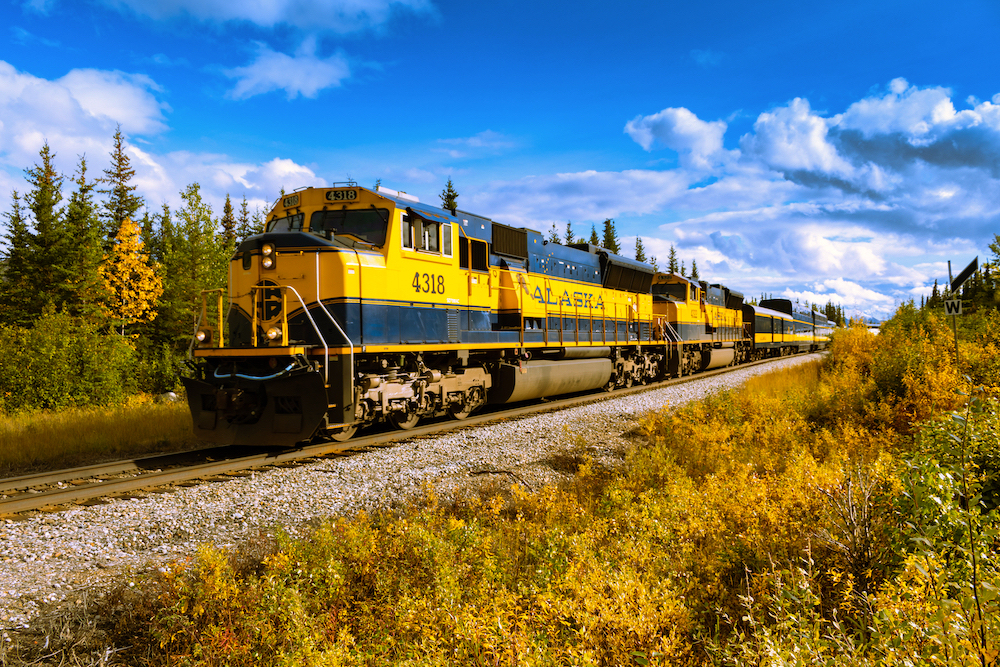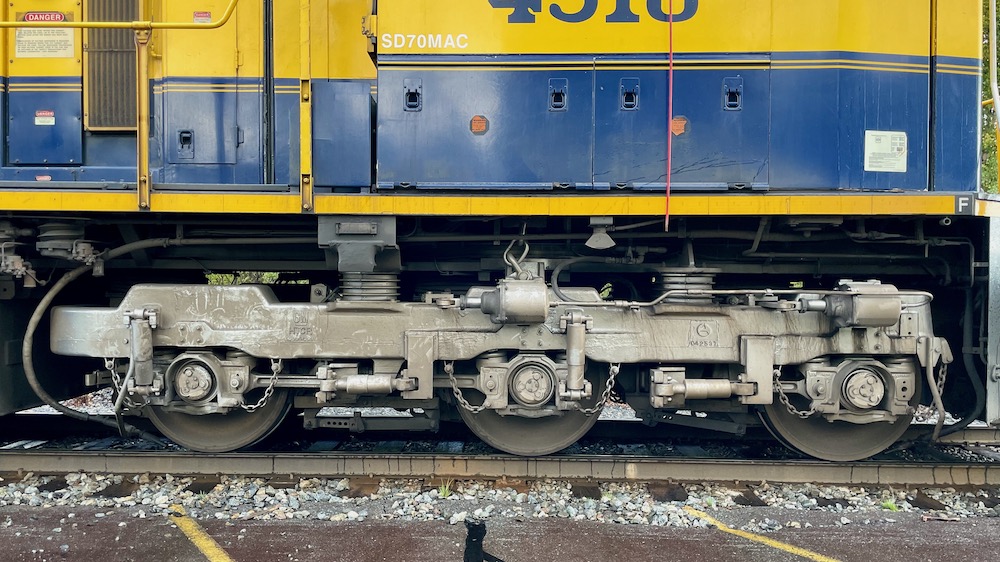
Note: This article corrects an earlier version that contained an error in the description of the SD70’s HTC-R trucks. See Comments for more information.
Alaska Railroad’s SD70MACs make up the backbone of the railroad’s freight operations and they also power all the ARR’s long-distance passenger trains — wait, isn’t the SD70MAC a freight locomotive?
Although designed by Electro-Motive as heavy-duty freight haulers, 12 of ARR’s fleet of 28 SD70s include 480-volt head-end power capability, making them equally suited for passenger or freight duties. These dual-purpose SD70MACs are unique in the industry.
SD70s make up more than half of the ARR’s fleet of 51 locomotives. (The others include 8 GP38-2s and 15 GP40-2s.) The 4,000-horsepower SD70s, ARR’s first-ever six-axle units, were built between 1993 and 2003 in three orders — the last had to be custom-ordered as EMD had moved on to building the SD70ACE
In the SD70MAC, the 500-mile-long state-owned railroad found a perfect match for its needs. The alternating current traction motors tame the railroad’s grades and its innovative HTC-R trucks glide around the line’s many tight curves. And, yes, SD70MACs make fine passenger engines.

Updated 9/18/23 to reflect change in terminology.














The Alaska Railroad operates in and serves some of the most harshest and rugged areas of the world and in most parts of Alaska the railroad is the only means for the residents living there to get supplies and materials shipped in and also for travel to and from many remote areas and towns and cities These SD70MACs look rugged and have that brutish look and nature about them but you need something that is tough and powerful to serve the terrain and often hostile climate and landscape of Alaska. What is remarkable is the Alaska Railroad never had any connection or interchange with the Canadian rail lines right next door across the border and any rail equipment. And supplies including these locomotive had to be shipped in by water and large cargo vessels. There is talk and plans afloat to build and create an interchange with the Canadian lines at the Canadian border. If that actually comes to pass and is built then that will be a true North American transcon with Alaska finally being connected to the rest of the continent by rail. Joseph C Markfelder
Well the traction motors have some degree of computer management…but we railroaders wondered why it took so long to develop individual axle control on EMD products. And I wonder if you could call these SD70MACH? That probably wouldn’t fit into the fields of any railroad’s locomotive database!
The author states the HTCR radial trucks are computer controlled which is completely untrue. These trucks steer in reaction to the creep forces generated at the wheel-rail interface so are known as self-steering trucks. There are no actuators or sensors on the trucks that would be required if they were computer controlled. What are seen on the sides of the truck connected to the steering beams are hydraulic yaw dampers which insure the stable running of the trucks. BTW, “steerable” is a GE term they use to describe their radial steering trucks, which operate in a similar manner as the HTCR, but use a different linkage system to allow the axle motion required to steer. EMD always described the HTCR as a self-steering radial truck.
Dave Goding, patent holder and inventor of the HTCR truck.
Awesome job on the invention Mr. Goding!